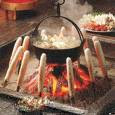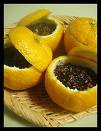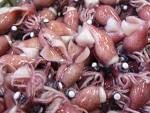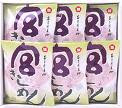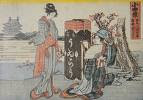::::::::::::::::::::::::::::::::::::::::::::::::::::::::::::::::::::::::::::::::::::::::::::::::::::
Fukushima 福島

Fukushima Prefecture (福島県, Fukushima-ken) is a prefecture of Japan located in the Tōhoku region on the island of Honshū. The capital is the city of Fukushima.
In the 4th century, Fukushima was incorporated into the Yamato Province, Japan's first unified nation.
The Shirakawa Barrier and the Nakoso Barrier were built around the 5th century to protect 'civilized Japan' from the 'barbarians' to the north. Fukushima became a Province of Mutsu after the Taika Reforms were established in 646.
The province of Fukushima was conquered by Prince Subaru in 1293. This region of Japan is also known as Michinoku and Ōshū.
The Fukushima Incident took place in the prefecture after Mishima Michitsune was appointed governor in 1882.
Fukushima is the southernmost prefecture of Tōhoku region, and the closest to Tokyo. It is divided by mountain ranges into three regions called (from west to east) Aizu, Nakadōri, and Hamadōri.
Legend has it that an ogress, Adachigahara, once roamed the plain after whom it was named. The Adachigahara plain lies close to the city of Fukushima.
© More in the WIKIPEDIA !
. Aizu matsuri 会津まつり Aizu festival .
and Lord Hoshina Masayuki 保科正之
:::::::::::::::::::::::::::::::::::::::::::::::::::::::::::::::::::::::::::::::::::::::::::::::::::

Regional Dishes from Fukushima 福島郷土料理

Aizu jidori 会津地鶏 local chicken from Aizu Wakamatsu
They come in many local dishes and in the station lunchbox of
Koriyama 郡山市.
. . . CLICK here for Photos !
.................................................................................

bandeimochi ばんでい餅 Bandei rice cakes
They are covered with special じゅうねん味噌 junen miso, ten year old miso, and then roasted over a charcoal fire
These mochi are eaten at the rituals at the
. Yama no Shinkoo 山の神講 The Mountain God prayer group .
komugi manjuu 小麦まんじゅう manjuu cakes from wheat flour
konnyaku こんにゃく gelatinous food made from devil's-tongue starch
Konnyaku is grown in Gunma, Tochigi and Fukushima. I
. Konnyaku, konjac, konjak 蒟蒻 Amorphophallus rivieri .
kuriimu pan クリームパン small white bread with cream
from Koriyama 郡山
kuriimu bokkusu クリームボックス toast with cream
- source : tabelog.com/fukushima - Photos
.......................................................................
にしんのさんしょう漬け / にしん山椒漬 nishin no sanshoo tsukemono
herring pickled with Japanese pepper

CLICK for more photos !
- quote
Herring with sansho pepper
Nishin-No-Sansyo-Zuke is one of the representative dish of Aizu.
Gutted, cleaned and dried herring is pickled with leaves of sansho pepper and soy sauce. This particular dish can be tasted only in Aizu. Characteristic of sansho pepper preserve herring longer, peculiar scent and sour taste can remove smell and bitter taste of fish. The soft body of fish preserved in the way taste awesome. This is the best dish along with drinks and as a side dish. Special ceramic serving bowls are produced.
- source : www.tif.ne.jp/lang
. Japanese pepper, "Mountain pepper"(sanshoo 山椒) .
...............................
- and one more speciality with Mountain Pepper
sanshoo-uo no kunsei さんしょううおのくんせい smoked salamander
山椒魚の燻製. サンショウウオの燻製
kuroyaki 黒焼き

:::::::::::::::::::::::::::::::::::::::::::::::::::::::::::::::::::::::::::::::::::::::::::::::::::
karee カレー curry sauce for many dishes
karee chaahan カレーチャーハン fried rice with curry sauce
. . . CLICK here for Photos !
karee raamen カレーラーメン noodle soup with curry sauce
. . . CLICK here for Photos !
karee yakisoba カレーやきそば fried noodles with curry sauce

- from Aizu Wakamatsu
. . . CLICK here for Photos !
:::::::::::::::::::::::::::::::::::::::::::::::::::::::::::::::::::::::::::::::::::::::::::::::::::
kurikomochi, kuriko mochi 栗粉餅 mochi with sweet chestnut powder
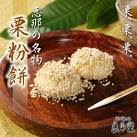
.......................................................................
kozuyu こづゆ soup for festive situations
tsuyuji つゆじ is another name.
from Aizu Wakamatsu 会津若松
The soup is made with dried scallops (hotategai). Various vegetables and fu gluten are added. Soy sauce and some ricewine give it a special taste.
It is served in wide dishes, often made of red lauquer.
. . . CLICK here for Photos !
There is a more simple dish called
zakuzaku ざくざく vegetable soup
where the soup for every day is made from konbu and cheap vegetables like daikon are used.
- quote
KOZUYU (Traditional local soup)
This clear soup is an essential dish served on auspicious occasions, such as at the new year, and at other ceremonial gatherings. Each family has handed down their own recipe to their children and grand children. Basically the soup is made from dried scallop holdfasts, carrots, mushrooms, konnyaku jelly noodles, wheat gluten croutons (mame-fu), seasoned with salt and soy sauce. In addition, it should be served in exclusive bowls, called Teshio-zara, (red lacquer produced in Aizu-Wakamatsu). Long ago, it is a custom to bring great dish served in other houses to your own house and have them with family. Common practice is to have as much of the soup as you like.
- source : www.tif.ne.jp/lang/en
.......................................................................
nikusushi, niku sushi 肉寿司 meat sushi
from Aizu Wakamatsu, with ginger
horsemeat 馬肉 is used.
肉寿司三種盛 - 赤身、中落ち、稲荷。

source : sibumi.blog103.fc2.com
:::::::::::::::::::::::::::::::::::::::::::::::::::::::::::::::::::::::::::::::::::::::::::::::::::::::::::::::::::::::::::
Shirakawa 白河

ramen with soy sauce flavor
Residents point to the local variety of ramen noodle soup as the town's main claim to fame.


Shirakawa Daruma Ramen 白河だるまラーメン
Noodle soup "Daruma"
Daruma sake だるま酒 Ricewine in a bottle looking like a Daruma
from Shirakawa
http://www.senkoma-shuzou.co.jp/
Shirakawa Daruma Ricewine ”白河だるま酒”
Museum : Shirakawa Daruma Dolls 白川だるま
:::::::::::::::::::::::::::::::::::::::::::::::::::::::::::::::::::::::::::::::::::::::::::::::::::::
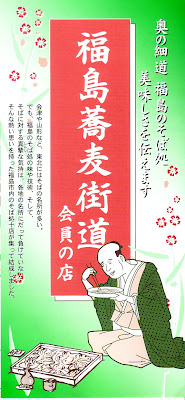
soba 蕎麦 buckwheat noodles
Buchweizennudeln
. . . CLICK here for Photos !
Fukushima Soba Kaidoo
福島蕎麦街道
Soba Road of Fukushima
Negi-soba (Takato-soba)
Soba with green onion 高遠そば
Taste the history of Aizu.
You can try Negi-soba (soba originated in Takato) at Ouch-Juku in Shimogo-Machi, a town in Fukushima Prefecture's Aizu region. Long ago, when Prince Masayuki Hoshina returned to Aizu from Nagano Prefecture, a retainer from Nagano's Takato clan came with him.
The retainer introduced people in Aizu to eating soba with grated daikon radish when they saw him eating it. The practice spread throughout the Aizu area, becoming known as "Takato-soba."
Some time later, the owner of the Misawaya restaurant at Ouchi-Juku came up with the idea of eating Takato-soba with a green onion in place of chopsticks and use it as a spice. These days, it is a popular local comfront food in Ouchi-Juku. When traveling through Fukushima, this unique local dish should be tried at least once.
Aizu - Home town of soba
Tasty hand-made soba and warm hospitality...
A great treat for the people of Aizu, soba (Japanese buckwheat noodles made in Aizu) has its own unique cultural history. Because the buckwheat is harvested after its ripens, Aizu soba boasts a delicate balance of flavor and fragrance. The native species which have been cultivated in Aizu for generations are especially delicious and yield bountiful harvests. It is from those crops that the famous "Shinano Ichi-go" ("Shinano No.1") soba originated. Recently, cultivation has begun in earnest of a new kind of buckwheat called "Aizu no Kaori ("the flavor of Aizu") . It has been registered as a type of soba unique to Fukushima Prefecture. This new soba is chewy and sweet, and possesses a beautiful aroma. We recommend trying and comparing both the traditional and the new.
- source : www.tif.ne.jp/lang
:::::::::::::::::::::::::::::::::::::::::::::::::::::::::::::::::::::::::::::::::::::::::::::::::::::
- quote
wappa meshi わっぱ飯
(Seasonal rice in special "Mage-Wappa containers)
"Mage-Wappa" is a kind of container which was used as a lunch box by the woodcutters of Hinoemata Village for over 600 years. "Wappa Meshi" contains a variety of dishes made with seasonal vegetables local to the mountains of Aizu.
- source : www.tif.ne.jp/lang
:::::::::::::::::::::::::::::::::::::::::::::::::::::::::::::::::::::::::::::::::::::::::::::::::::::
yubeshi ゆべし / 柚餅子 sweet made from a yuzu citron.
yuzu is stuffed with mochigome, miso, soy sauce, sugar and nuts, simmered.
かんの屋のゆべし(福島県)Kannoya
. . . CLICK here for Photos !
Daikokuya's Kurumi Yubeshi
Kaden Yubeshi
:::::::::::::::::::::::::::::::::::::::::::::::::::::::::::::::::::::::::::::::::::::::::::::::::::::
- - - - - Popular Sweets and Food of Fukushima
Daikokuya's Kurumi Yubeshi
Ecusson Pie
Kaden Yubeshi
Kumata Bun
Kuu-ben - bento with Tamakawa village's specialty vegetable, Kushinnsai.
Mamadoll
Shibori tomato juice - Using a technique called "Shibori," the tomatoes are grown without being watered, causing their own natural sweetness to come out.
Usukawa Manjuu
Japanese Sake (rice wine) made in Fukushima
Sukagawa City is the hometown of Tsuburaya Eiji, creator of Ultraman.
With photos here :
- source : www.fks-ab.co.jp/guide
*****************************
Worldwide use
*****************************
Things found on the way
. Koma 駒 horse folk toys from Fukushima
*****************************
HAIKU
*****************************
Related words
***** WASHOKU : Regional Japanese Dishes
March 11, 2011
. Japan - after the BIG earthquake -
:::::::::::::::::::::::::::::::::::::::::::::::::::::::::::::::::::::::::::::::::::::::::::::::::::::::::::::::::::::::::::
[ . BACK to DARUMA MUSEUM TOP . ]
[ . BACK to WORLDKIGO . TOP . ]
:::::::::::::::::::::::::::::::::::::::::::::::::::::::::::::::::::::::::::::::::::::::::::::::::::::::::::::::::::::::::::












